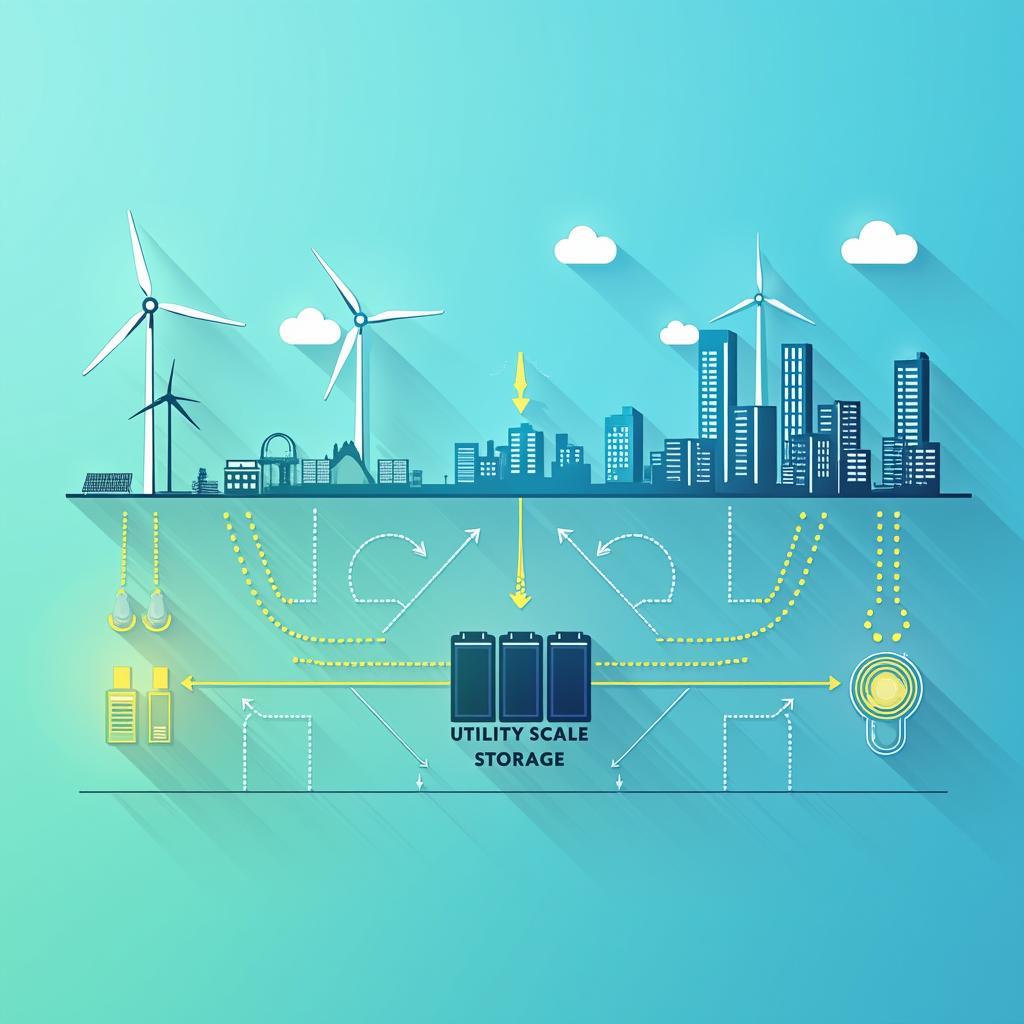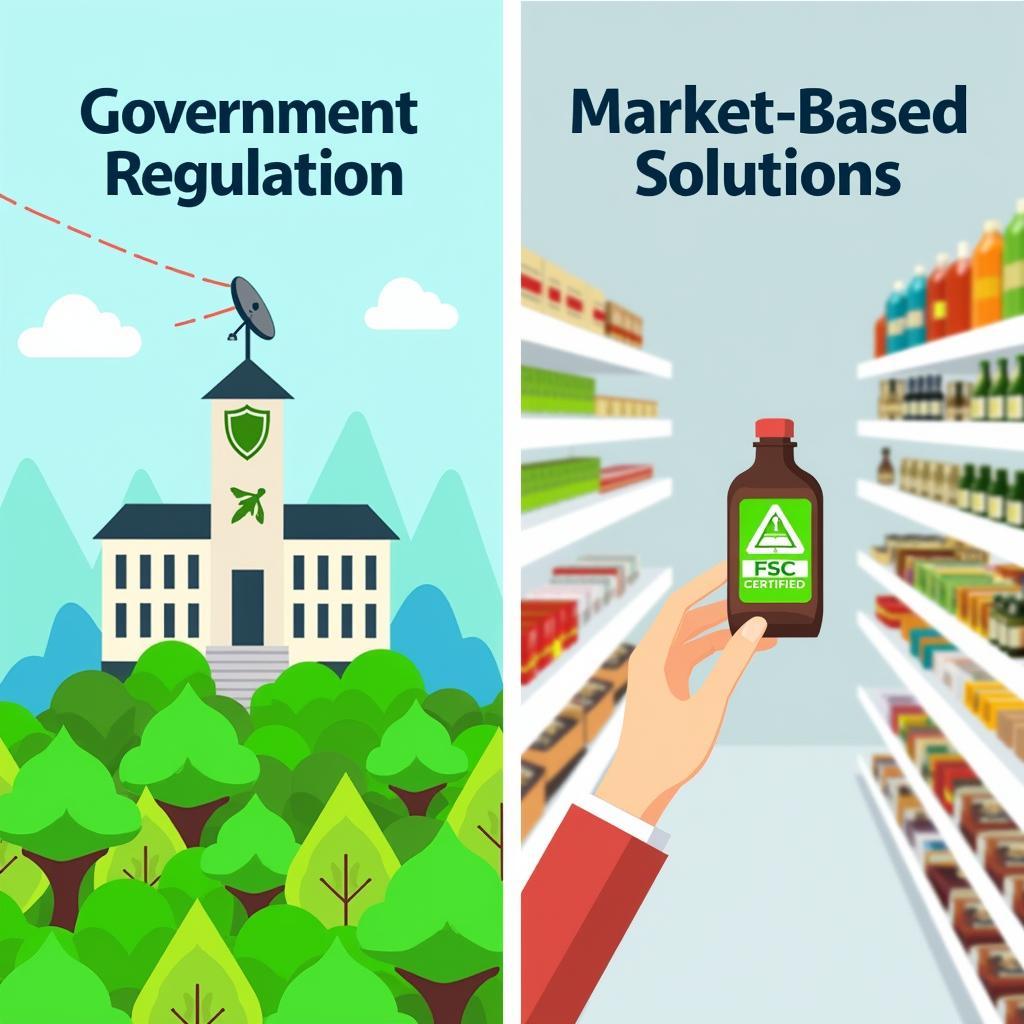Trong 10 năm qua, chủ đề The Benefits Of Investing In Renewable Energy xuất hiện khá thường xuyên trong IELTS Writing Task 2 dưới các biến thể như agree/disagree, advantages/disadvantages hay outweigh. Đây là một chủ đề “tủ” kết hợp môi trường, kinh tế và chính sách công, đòi hỏi luận điểm rõ ràng, bằng chứng hợp lý và từ vựng học thuật. Bài viết này giúp bạn: nắm chắc dạng bài, đọc 3 bài mẫu Band 6-9 đã hiệu chỉnh, hiểu phân tích chấm điểm theo 4 tiêu chí, học bộ từ vựng và cấu trúc câu ghi điểm, kèm checklist luyện thi và mẹo quản lý thời gian.
Nội dung bài viết
- 1. Đề Bài và Phân Tích
- 2. Bài Mẫu Band 8-9
- Phân Tích Band Điểm
- Tại Sao Bài Này Đạt Điểm Cao
- 3. Bài Mẫu Band 6.5-7
- Phân Tích Band Điểm
- So Sánh Với Bài Band 8-9
- 4. Bài Mẫu Band 5-6
- Phân Tích Band Điểm
- Học Từ Những Lỗi Sai
- Cách Cải Thiện Từ Band 6 Lên Band 7
- 5. Từ Vựng Quan Trọng
- 6. Cấu Trúc Câu Điểm Cao
- 7. Checklist Tự Đánh Giá
Một số đề thi/đề luyện đã được công bố bởi các nguồn uy tín:
- IELTS Liz (practice): “Countries should invest more in renewable energy sources such as solar and wind power. To what extent do you agree or disagree?”
- British Council (practice): “The use of alternative energy sources is encouraged. Do the advantages of this outweigh the disadvantages?”
- IDP (sample): “Some people believe that investing in green energy is the most effective way to tackle environmental problems. To what extent do you agree or disagree?”
Trong phần dưới, tôi chọn một đề phổ biến, phân tích yêu cầu, đưa 3 bài mẫu chuẩn Band 5-6, 6.5-7, 8-9, cùng bảng điểm, giải thích chi tiết và lộ trình nâng band. Bạn sẽ có đầy đủ công cụ để tự viết, tự chấm và tối ưu bài luận theo tiêu chí chính thức của IELTS.
1. Đề Bài và Phân Tích
Governments should invest heavily in renewable energy to combat climate change and ensure energy security. To what extent do you agree or disagree?
Dịch đề: Chính phủ nên đầu tư mạnh vào năng lượng tái tạo để chống biến đổi khí hậu và đảm bảo an ninh năng lượng. Bạn đồng ý hay không đồng ý ở mức độ nào?
Phân tích đề bài:
- Dạng câu hỏi: Opinion (To what extent do you agree or disagree?). Bạn cần nêu rõ lập trường ngay mở bài (thường là agree hoặc partially agree) và bám sát hai mục tiêu: climate change và energy security.
- Thuật ngữ quan trọng:
- Renewable energy: năng lượng tái tạo (solar, wind, hydro, geothermal, biomass).
- Energy security: an ninh năng lượng (ổn định nguồn cung, giá cả, giảm phụ thuộc nhập khẩu).
- Invest heavily: đầu tư mạnh (ngân sách, ưu đãi thuế, PPP…).
- Lỗi thường gặp:
- Lệch trọng tâm: chỉ nói về môi trường, quên “energy security”.
- Lập luận chung chung, thiếu ví dụ/logic kinh tế cơ bản (chi phí đầu tư đầu kỳ, việc làm xanh, hiệu ứng lan tỏa).
- Từ vựng lặp lại “good/bad” thay vì collocations học thuật.
- Sai mạo từ a/an/the; sai thì với dữ kiện tổng quát; dùng giới từ sai (depend on, invest in).
- Cách tiếp cận chiến lược:
- Chọn 2-3 luận điểm cốt lõi: giảm phát thải và ô nhiễm; đa dạng hóa nguồn cung và giá; tạo việc làm/công nghệ nội địa.
- Thừa nhận hạn chế (intermittency, chi phí hạ tầng lưới) rồi phản biện (giải pháp lưu trữ, grid upgrades, economies of scale).
- Kết cấu: Introduction (clear stance) → 2 body paragraphs (mỗi đoạn 1–2 luận điểm + ví dụ/giải thích) → Counterargument + refutation (ngắn) → Conclusion.
 Hình ảnh minh họa các nguồn năng lượng tái tạo phổ biến như tuabin gió và tấm pin mặt trời trên một cánh đồng.
Hình ảnh minh họa các nguồn năng lượng tái tạo phổ biến như tuabin gió và tấm pin mặt trời trên một cánh đồng.
2. Bài Mẫu Band 8-9
Bài Band 8-9 cần lập trường nhất quán, phát triển ý sâu, ví dụ hợp lý, từ vựng linh hoạt và ngữ pháp tinh tế.
Bài luận (≈300 words):
While some argue that decarbonisation can be achieved through incremental efficiency gains, I strongly believe governments should prioritise large-scale investment in renewables. The most compelling reason is that the benefits of investing in renewable energy accrue simultaneously to the climate and the economy. Wind and solar, when paired with modern grids, deliver near-zero operational emissions, which makes deep cuts in national carbon footprints not just aspirational but feasible within one or two investment cycles.
Equally important is energy security. Countries exposed to volatile fossil fuel markets face price shocks and supply disruptions that reverberate through households and industry. In contrast, diversifying domestic energy portfolios with wind, solar, hydro and geothermal insulates consumers against geopolitical risk. Although intermittency is a legitimate concern, it is being mitigated by utility-scale storage, improved interconnectors, and demand-response technologies. As these solutions scale, levelised costs keep falling, and renewables become the rational default rather than a subsidised alternative.
 Sơ đồ minh họa hệ thống lưới điện thông minh với các giải pháp lưu trữ năng lượng tái tạo quy mô lớn.
Sơ đồ minh họa hệ thống lưới điện thông minh với các giải pháp lưu trữ năng lượng tái tạo quy mô lớn.
Critics often cite high upfront costs and land-use conflicts. Yet these objections overlook dynamic effects. Public investment crowds in private capital via public–private partnerships, reduces financing risk, and catalyses domestic supply chains, creating high-quality jobs in manufacturing, installation, and maintenance. Moreover, thoughtful planning—such as repurposing degraded land and prioritising rooftops—substantially alleviates spatial pressures. Crucially, when negative externalities of fossil fuels (air pollution, health costs, climate damages) are correctly priced, renewables are not expensive; fossil energy is artificially cheap.
In sum, by deploying smart policy and targeted expenditure, governments can simultaneously cut emissions and stabilise energy systems. Given the urgency of climate action and the strategic value of energy independence, heavy investment in renewables is not merely desirable; it is the most cost-effective pathway to a resilient, low-carbon future.
Phân Tích Band Điểm
| Tiêu chí | Band | Nhận xét |
|---|---|---|
| Task Response (Hoàn thành yêu cầu) | 8.5 | Trả lời trực diện, lập trường rõ ràng từ đầu đến cuối, phát triển cả climate change và energy security với phản biện thuyết phục. Có thừa nhận hạn chế và đưa giải pháp. |
| Coherence & Cohesion (Mạch lạc & Liên kết) | 8.0 | Bố cục 4 đoạn rõ ràng, mỗi đoạn một ý chính. Liên kết ý bằng từ nối học thuật mượt mà; tham chiếu logic xuyên suốt. Không lặp từ nối. |
| Lexical Resource (Từ vựng) | 8.5 | Phong phú, chính xác: decarbonisation, levelised costs, demand-response, externalities. Collocations tự nhiên, không gượng ép; ít/không lỗi chính tả. |
| Grammatical Range & Accuracy (Ngữ pháp) | 8.0 | Đa dạng: mệnh đề quan hệ, cụm phân từ, câu điều kiện ngụ ý, đảo ngữ nhẹ. Cấu trúc phức nhưng chính xác; không lỗi ngữ pháp đáng kể. |
Tại Sao Bài Này Đạt Điểm Cao
- Lập trường mạnh và nhất quán, nhắc lại khéo léo ở mở bài và kết bài.
- Phủ trọn hai trục yêu cầu: giảm phát thải và an ninh năng lượng.
- Dẫn giải logic kinh tế: chi phí vòng đời, externalities, crowding-in effect.
- Phản biện quan điểm đối lập (chi phí, đất đai) rồi đưa giải pháp khả thi.
- Từ vựng học thuật đa dạng, collocations chuyên ngành năng lượng chuẩn.
- Câu phức linh hoạt, nhịp văn tự nhiên, không “khoe cấu trúc”.
- Ví dụ/khái niệm cập nhật: storage, interconnectors, demand-response.
3. Bài Mẫu Band 6.5-7
Bài Band 6.5-7 có luận điểm rõ, ví dụ hợp lý nhưng chưa thật sâu; từ vựng tốt nhưng còn lặp; cấu trúc câu đa dạng vừa phải.
Bài luận (≈265 words):
Many people argue that governments should pour more money into renewable sources. I mostly agree because clean energy reduces emissions and makes countries less dependent on imported fuels. First, solar and wind produce electricity without burning coal or gas, which directly lowers greenhouse gases. If policy supports grid upgrades and basic storage, these sources can meet a large share of demand, especially during peak sunshine or windy hours.
Second, investing in local renewables improves energy security. When prices of oil or gas rise due to global events, households suffer from high bills. By contrast, using domestic renewable resources stabilises supply and can create new jobs in installation and maintenance. In addition, as more turbines and panels are produced, costs usually fall because of economies of scale, which helps taxpayers in the long run.
 Các công nhân đang lắp đặt tấm pin mặt trời, minh họa cho lợi ích tạo việc làm từ ngành năng lượng tái tạo.
Các công nhân đang lắp đặt tấm pin mặt trời, minh họa cho lợi ích tạo việc làm từ ngành năng lượng tái tạo.
However, I recognise some downsides. Renewables can be intermittent, so they may not provide power at all times. There are also concerns about land use and noise from wind farms. Nevertheless, these issues can be addressed by better planning, such as putting solar on rooftops, placing wind farms offshore, and investing in batteries to store excess electricity. Governments do not need to pay for everything alone; public–private partnerships can share the costs and risks.
In conclusion, while renewable energy is not perfect, the advantages outweigh the drawbacks. With sensible investment and regulation, countries can both protect the environment and keep their lights on at a reasonable cost.
Phân Tích Band Điểm
| Tiêu chí | Band | Nhận xét |
|---|---|---|
| Task Response (Hoàn thành yêu cầu) | 7.0 | Quan điểm rõ, phát triển hai lợi ích chính; có phản biện và giải pháp nhưng vẫn còn khái quát, ví dụ chưa thật cụ thể. |
| Coherence & Cohesion (Mạch lạc & Liên kết) | 7.0 | Bố cục hợp lý; từ nối đa dạng vừa phải. Một vài ý chuyển đoạn còn đơn giản, liên kết câu chưa thật tinh tế. |
| Lexical Resource (Từ vựng) | 6.5 | Dùng đúng nhiều từ chủ đề; còn lặp “renewables/energy” và thiếu một số collocations nâng cao. Ít lỗi từ vựng. |
| Grammatical Range & Accuracy (Ngữ pháp) | 6.5 | Có câu phức nhưng chủ yếu là cấu trúc phổ biến; độ chính xác tốt, vài chỗ có thể nâng cấp mệnh đề/đảo ngữ. |
So Sánh Với Bài Band 8-9
- Độ sâu lập luận: Bài 8-9 phân tích externalities, levelised cost, cơ chế tài chính; bài 6.5-7 dừng ở lợi ích tổng quát.
- Từ vựng: 8-9 dùng thuật ngữ chuẩn ngành, collocations tự nhiên; 6.5-7 ít cụm nâng cao, lặp từ.
- Cấu trúc câu: 8-9 đa dạng hơn (cụm phân từ, điều kiện nâng cao), 6.5-7 chủ yếu câu ghép.
- Phản biện: 8-9 chỉ ra hạn chế rồi đưa giải pháp cụ thể; 6.5-7 giải pháp vẫn chung.
4. Bài Mẫu Band 5-6
Bài Band 5-6 thường ý chưa sâu, ví dụ mơ hồ, lặp từ, và có lỗi ngữ pháp/từ vựng dễ thấy.
Bài luận (≈255 words):
Some people think government should invest a lot in renewable energy. I think it is good because it protect environment and save money in the future. Firstly, solar and wind are clean and do not make pollution like coal, so it will stop climate change. Also, many countries can install panels everywhere and then they will not need to buy fuel from other countries, which is safer.
However, there are problems. Renewable energy is not always available. When there is no sun or wind, electricity will stop, and this is very dangerous for hospitals and factories. Batteries are expensive and not many places can pay for them. Moreover, wind turbines are noisy and people do not like to live near them. Government should listen to citizens and maybe move them far away, but then the cost is even more higher.
Even with these problems, I still believe invest in renewables is necessary. The government can give money to companies to build more projects and reduce price. In long time, it will be cheaper than oil and gas because we do not have to import a lot. In conclusion, renewable energy has more benefits than disadvantages, and government should put more budget on it to make the country cleaner and safe in the future.
Phân Tích Band Điểm
| Tiêu chí | Band | Nhận xét |
|---|---|---|
| Task Response (Hoàn thành yêu cầu) | 5.5 | Có trả lời đề nhưng lý lẽ đơn giản, thiếu phát triển và ví dụ đáng tin; một số khẳng định quá mức. |
| Coherence & Cohesion (Mạch lạc & Liên kết) | 5.5 | Có chia đoạn nhưng ý rời rạc, chuyển ý đột ngột; từ nối lặp, kết nối lỏng. |
| Lexical Resource (Từ vựng) | 5.5 | Lặp từ (renewable/energy/government), dùng từ chung chung; một số collocations sai hoặc thiếu tự nhiên. |
| Grammatical Range & Accuracy (Ngữ pháp) | 5.0 | Lỗi mạo từ, chia thì, số ít/số nhiều, giới từ; cấu trúc câu đơn giản, có lỗi thỏa thuận chủ-vị. |
Học Từ Những Lỗi Sai
| Lỗi sai | Loại lỗi | Sửa lại | Giải thích |
|---|---|---|---|
| it protect environment | Chia động từ | it protects the environment | Chủ ngữ số ít “it” → động từ thêm “-s”; cần mạo từ “the environment”. |
| make pollution | Collocation | cause pollution / produce emissions | “Make pollution” không tự nhiên; dùng “cause”/“produce”. |
| install panels everywhere | Từ vựng mơ hồ | deploy solar panels widely | “Everywhere” quá tuyệt đối; “deploy … widely” học thuật hơn. |
| even more higher | Thừa từ | even higher | “More higher” là so sánh kép sai. |
| I still believe invest in renewables | Dạng danh động từ | I still believe investing in renewables | Sau “believe” là mệnh đề; nếu danh hóa, dùng “investing”. |
| put more budget on | Giới từ/collocation | allocate more budget to | “Allocate … to” là cụm chuẩn. |
Cách Cải Thiện Từ Band 6 Lên Band 7
- Tập trung 2 luận điểm chính, mỗi luận điểm có giải thích “why + how + so what” và một ví dụ ngắn, đáng tin.
- Nâng cấp từ vựng: externalities, energy security, grid upgrades, storage, economies of scale.
- Đa dạng cấu trúc: mệnh đề quan hệ không xác định, cụm phân từ, câu điều kiện loại 1/2/3 kết hợp.
- Sửa lỗi cơ bản: mạo từ a/an/the; chia thì cho khái quát (present simple); giới từ chuẩn (invest in, depend on, allocate to).
- Tránh tuyệt đối hóa (everywhere, always); dùng hedging (largely, to a great extent).
5. Từ Vựng Quan Trọng
| Từ/Cụm từ | Loại từ | Phiên âm | Nghĩa tiếng Việt | Ví dụ (EN) | Collocations |
|---|---|---|---|---|---|
| renewable energy | n. | /rɪˈnuːəbl ˈenərdʒi/ | năng lượng tái tạo | Investing in renewable energy reduces emissions. | renewable portfolio; renewable targets |
| energy security | n. | /ˈenərdʒi sɪˈkjʊrəti/ | an ninh năng lượng | Policy can enhance energy security. | enhance/undermine energy security |
| decarbonisation | n. | /diːˌkɑːrbənaɪˈzeɪʃn/ | khử carbon | Rapid decarbonisation is essential. | rapid/sectoral decarbonisation |
| intermittency | n. | /ˌɪntərˈmɪtənsi/ | tính gián đoạn | Storage mitigates intermittency. | mitigate/overcome intermittency |
| grid integration | n. | /ɡrɪd ˌɪntɪˈɡreɪʃn/ | tích hợp lưới điện | Grid integration lowers curtailment. | improve/enable grid integration |
| levelised cost | n. | /ˈlevəlaɪzd kɒst/ | chi phí quy dẫn | The levelised cost of solar has fallen. | falling/competitive levelised cost |
| externalities | n. | /ˌekstərˈnælətiz/ | ngoại tác | Pricing externalities changes choices. | negative/positive externalities |
| economies of scale | n. | /ɪˈkɒnəmiz əv skeɪl/ | kinh tế theo quy mô | Mass production yields economies of scale. | achieve/realise economies of scale |
| public–private partnership | n. | /ˌpʌblɪk ˈpraɪvət ˈpɑːrtnərʃɪp/ | đối tác công tư | PPPs mobilise capital. | structure/finance PPPs |
| capital expenditure | n. | /ˈkæpɪtl ɪkˈspendɪtʃər/ | chi đầu tư | High capital expenditure deters firms. | high/ upfront capital expenditure |
| By the same token | linker | — | cùng lý lẽ đó | By the same token, storage supports reliability. | — |
| In the long run | phrase | — | về dài hạn | In the long run, costs decline. | — |
| substitute | v./n. | /ˈsʌbstɪtuːt/ | thay thế | Solar can substitute for gas. | substitute A for B |
| volatile | adj. | /ˈvɑːlətl/ | biến động (giá) | Volatile fuel prices hurt consumers. | volatile markets/prices |
| insulate (from) | v. | /ˈɪnsjuleɪt/ | cách ly/bảo vệ khỏi | Renewables insulate economies from shocks. | insulate households from shocks |
Lưu ý phát âm: luyện IPA chậm, nhấn trọng âm đúng; ghép collocations để nhớ lâu (flashcards + câu ví dụ).
6. Cấu Trúc Câu Điểm Cao
-
Câu phức với mệnh đề phụ thuộc
- Công thức: [Mệnh đề chính], because/although/while [mệnh đề phụ].
- Ví dụ từ bài 8-9: While some argue that decarbonisation can be achieved through incremental efficiency gains, I strongly believe…
- Vì sao ghi điểm: Tạo đối lập tinh tế, mở đoạn chắc chắn.
- Ví dụ bổ sung: Although storage is costly, its price is declining. Because grids are outdated, upgrades are essential.
- Lỗi thường gặp: Nhầm dấu phẩy sau mệnh đề phụ thuộc ngắn; thiếu chủ ngữ.
-
Mệnh đề quan hệ không xác định
- Công thức: Danh từ, which/who + mệnh đề, …
- Ví dụ: Wind and solar, when paired with modern grids, deliver near-zero emissions, which makes deep cuts feasible.
- Điểm mạnh: Bổ sung thông tin mượt, tăng độ tinh tế.
- Ví dụ: These incentives, which reduce risk, attract investors. The policy, which was revised, improved uptake.
- Lỗi: Dùng that thay which trong mệnh đề không xác định; quên dấu phẩy.
-
Cụm phân từ
- Công thức: V-ing/V-ed + cụm, [mệnh đề chính]
- Ví dụ: Critics often cite high upfront costs, overlooking dynamic effects.
- Điểm mạnh: Nén thông tin, nhịp văn tự nhiên.
- Ví dụ: Facing volatile prices, many governments diversify. Designed properly, subsidies crowd in capital.
- Lỗi: Treo chủ ngữ (dangling participles).
-
Câu chẻ (Cleft sentences)
- Công thức: It is/was + X + that/who + mệnh đề
- Ví dụ: It is the strategic value of energy independence that justifies heavy investment.
- Điểm mạnh: Nhấn ý quan trọng.
- Ví dụ: It is long-term affordability that citizens care about. It was storage technology that resolved intermittency.
- Lỗi: Dùng sai thì hoặc nhấn nhầm thành phần.
-
Câu điều kiện nâng cao
- Công thức: If/Even if/Unless/Provided that + mệnh đề, …
- Ví dụ: Even if intermittency persists, diversified portfolios can stabilise supply.
- Điểm mạnh: Tạo sắc thái điều kiện, chín chắn.
- Ví dụ: Provided that grids are upgraded, costs will fall. Unless externalities are priced, markets misallocate.
- Lỗi: Sai thì (If + present, will + V); lẫn lộn unless/if not.
-
Đảo ngữ
- Công thức: Only when/Not until/Never/Rarely + trợ động từ + S + V
- Ví dụ: Only when negative externalities are priced does renewable power appear truly competitive.
- Điểm mạnh: Nhấn mạnh, đa dạng hóa cấu trúc.
- Ví dụ: Rarely has energy been so affordable. Not until storage scaled did reliability improve.
- Lỗi: Quên đảo trợ động từ; chia thì sai.
7. Checklist Tự Đánh Giá
- Trước khi viết:
- Xác định dạng bài và lập trường rõ ràng.
- Gạch 2-3 luận điểm chính + giải pháp/phản biện.
- Chọn 6-8 collocations chủ đề để dùng.
- Trong khi viết:
- Mở bài 2-3 câu, có lập trường.
- Mỗi body: 1 luận điểm → giải thích → ví dụ → mini-conclusion.
- Dùng 2-3 cấu trúc nâng cao tự nhiên.
- Sau khi viết:
- Soát mạo từ, chia thì, giới từ (invest in, depend on).
- Cắt lặp từ; thay bằng collocations/synonyms.
- Đảm bảo 260-320 từ và đủ 4 đoạn.
- Quản lý thời gian:
- 3 phút đọc đề + brainstorm
- 7 phút lập dàn ý
- 25 phút viết
- 5 phút soát lỗi
Bạn vừa đi trọn bộ chiến lược viết IELTS Writing Task 2 với chủ đề the benefits of investing in renewable energy: từ phân tích đề, 3 bài mẫu theo band điểm, đến từ vựng, cấu trúc câu và checklist tự chấm. Hãy luyện dàn ý nhanh, viết trong giới hạn thời gian, và tự đánh giá theo 4 tiêu chí để tiến bộ đều. Lộ trình thực tế: sau 2–4 tuần luyện đều đặn (3–4 bài/tuần), hầu hết học viên có thể tăng 0.5 band nhờ kiểm soát lỗi cơ bản, mở rộng collocations và nâng cấu trúc câu. Bây giờ, bạn hãy thử viết lại bài theo dàn ý gợi ý ở trên, đăng trong nhóm học tập hoặc phần bình luận để nhận phản hồi. Xem thêm các chủ đề liên quan [internal_link: chủ đề] như môi trường, công nghệ và chính sách công để mở rộng vốn từ và ý tưởng. Chúc bạn luyện tập hiệu quả và đạt band điểm mục tiêu với bài mẫu IELTS và mẹo viết IELTS đã chia sẻ trong bài.


